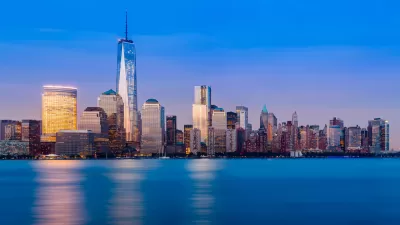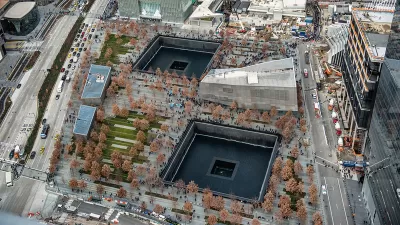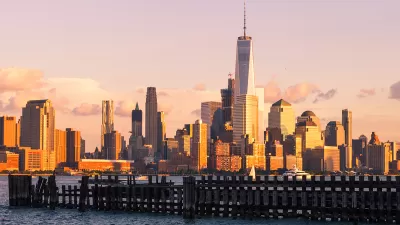After years of debate and negotiation, the redevelopment of the World Trade Center site finally appears to be going forward. But there is considerable doubt as to its economic viability, writes Eliot Brown.
Brown points out that the original WTC took decades to prove viable, and only because of enormous public subsidies. Now the new deal to redevelop the site is also set to put perhaps billions of dollars of public money behind the project -- and without any real demand for vast amount of office space it will create.
"A yearlong battle over the World Trade Center site between private developer Larry Silverstein, the Port Authority and the city seems to be ending...While the details are still under discussion and talks could yet break down, it would put hundreds of millions, if not billions, of additional public dollars at risk, as some combination of the Port Authority, the city and the state would likely back the financing on the bulk of the $4 billion–plus cost of the two privately built towers.
[N]early 7 million square feet, or two and a half Empire State Buildings, [would be] constructed within the span of a few years on one site-all with only a single private tenant in place, China-based Beijing Vantone, for a relatively trivial 190,000 square feet, or six floors."
FULL STORY: The Business of Ground Zero

Alabama: Trump Terminates Settlements for Black Communities Harmed By Raw Sewage
Trump deemed the landmark civil rights agreement “illegal DEI and environmental justice policy.”

Study: Maui’s Plan to Convert Vacation Rentals to Long-Term Housing Could Cause Nearly $1 Billion Economic Loss
The plan would reduce visitor accommodation by 25% resulting in 1,900 jobs lost.

Why Should We Subsidize Public Transportation?
Many public transit agencies face financial stress due to rising costs, declining fare revenue, and declining subsidies. Transit advocates must provide a strong business case for increasing public transit funding.

Paris Bike Boom Leads to Steep Drop in Air Pollution
The French city’s air quality has improved dramatically in the past 20 years, coinciding with a growth in cycling.

Why Housing Costs More to Build in California Than in Texas
Hard costs like labor and materials combined with ‘soft’ costs such as permitting make building in the San Francisco Bay Area almost three times as costly as in Texas cities.

San Diego County Sees a Rise in Urban Coyotes
San Diego County experiences a rise in urban coyotes, as sightings become prevalent throughout its urban neighbourhoods and surrounding areas.
Urban Design for Planners 1: Software Tools
This six-course series explores essential urban design concepts using open source software and equips planners with the tools they need to participate fully in the urban design process.
Planning for Universal Design
Learn the tools for implementing Universal Design in planning regulations.
Smith Gee Studio
Alamo Area Metropolitan Planning Organization
City of Santa Clarita
Institute for Housing and Urban Development Studies (IHS)
City of Grandview
Harvard GSD Executive Education
Toledo-Lucas County Plan Commissions
Salt Lake City
NYU Wagner Graduate School of Public Service





























